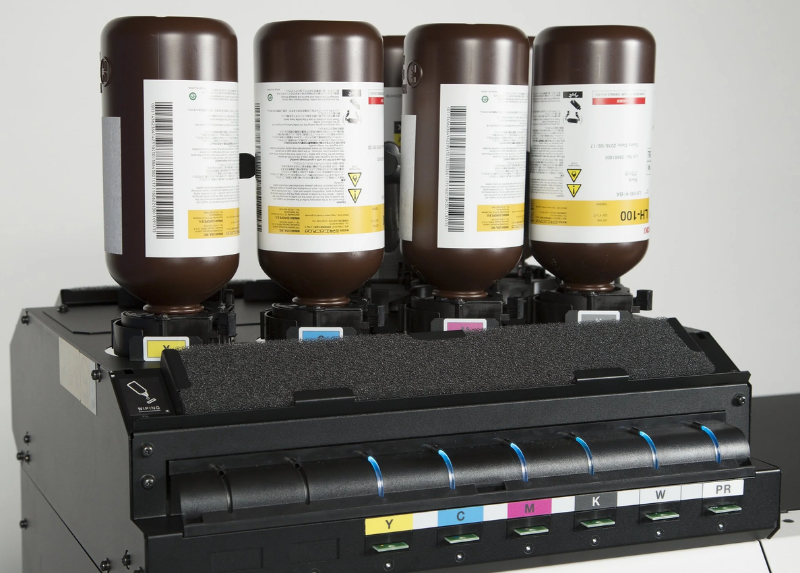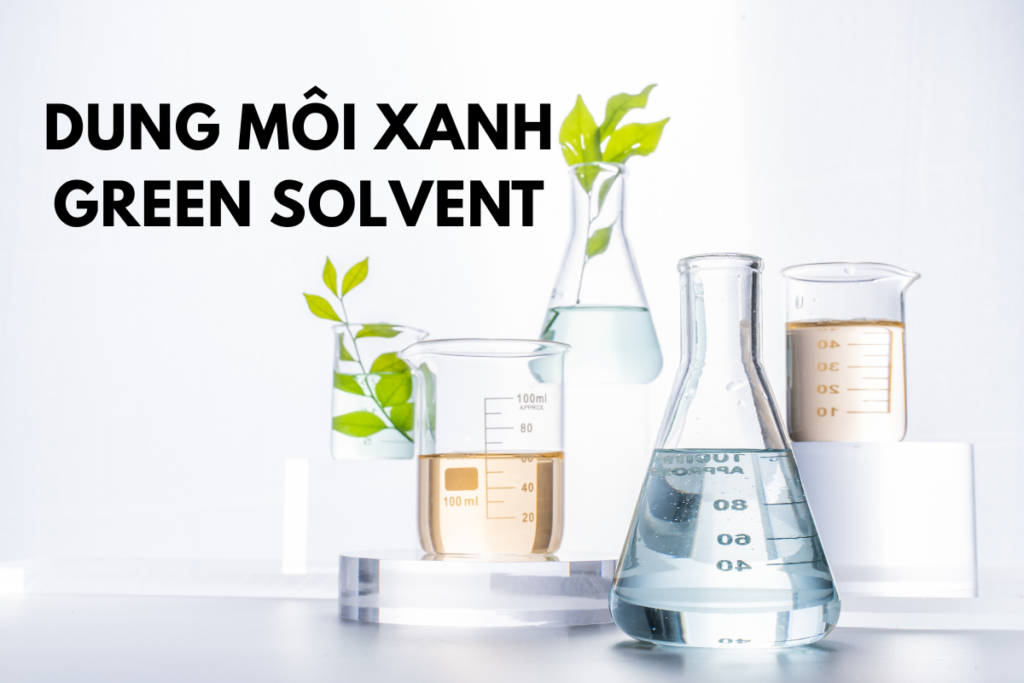What is VOC? The Health and Environmental Impacts of Volatile Organic Compounds
30/06/2025
|
Industry news
What is VOC? Volatile Organic Compounds (VOCs) are present in paints, solvents, and many everyday products, yet they pose significant risks to both health and the environment. From irritating the eyes and nose to contributing to air pollution, VOCs can greatly affect our lives. This article will explore VOCs in detail—their definition, sources, harmful effects, and effective mitigation solutions.
What is VOC?
VOCs (Volatile Organic Compounds) are organic chemicals that easily evaporate into the air as gases or vapors. They exist in liquid or solid form and are characterized by high vapor pressure and low boiling points (typically ≤ 250°C at standard atmospheric pressure of 101.3 kPa). Under normal conditions, they readily transition into gas form and disperse into the atmosphere from both natural and man-made sources. VOCs are found in a wide range of industrial and consumer products and play roles in various biological processes.
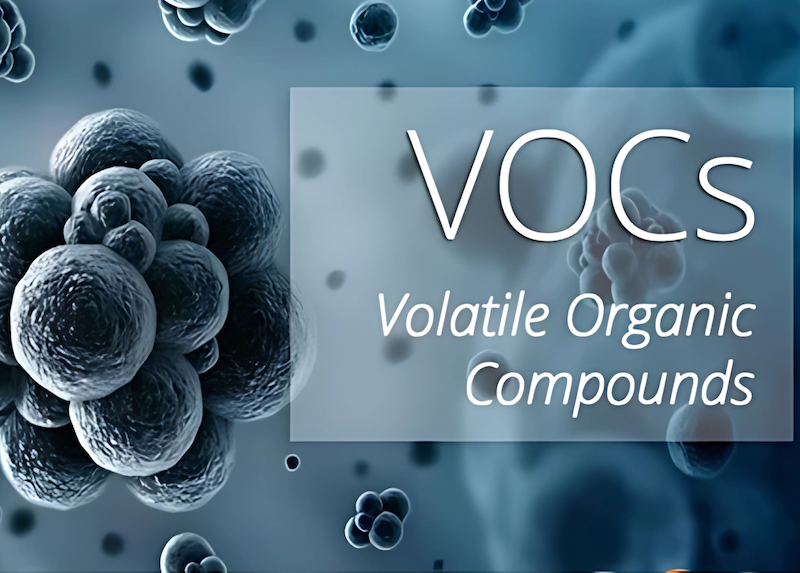
Sources of Volatile Organic Compounds
Volatile organic compounds originate from both natural processes and human activities. However, when discussing VOCs, the focus is often on synthetic compounds released into the air from industrial and commercial sources. Below are the two primary origins:
Naturally Occurring VOCs
Naturally occurring VOCs make up a smaller proportion but play an important role in environmental systems. Most of these compounds are emitted by plants, with an estimated 1,150 Tg (1 Tg = 10¹² g) of VOCs released into the atmosphere annually primarily isoprene.
These natural VOCs are generally less toxic and are balanced within ecosystems but still influence climate and air quality.
Man-Made VOCs
The majority of atmospheric VOCs are produced by human activities, especially in urban and industrial areas. According to statistics, around 50% of anthropogenic VOCs come from industrial processes, 16% from machinery, 11% from agriculture, 10% from transportation, and 10% from oil-based paints (including solvents and additives).
- Industrial and consumer products: VOCs are found in oil-based paints, wall paints, varnishes, adhesives, cleaning agents, and cosmetics. For example, formaldehyde in engineered wood or toluene in printing ink are common VOCs.
- Transportation and fuels: Emissions from gasoline, diesel, and vaporization at fueling stations release VOCs like benzene and hydrocarbons.
- Machinery and equipment: Devices like printers, photocopiers, air conditioners, and construction equipment emit VOCs such as acetone or xylene.
- Agriculture: Pesticides and chemical fertilizers release VOCs like chlorpyrifos.
- Chemical reactions: Once in the air, VOCs can undergo photochemical reactions under the influence of sunlight and heat, forming secondary pollutants like ground-level ozone and photochemical smog.
Artificial VOCs are the main contributors to urban air pollution, necessitating strict control measures to minimize their impact.
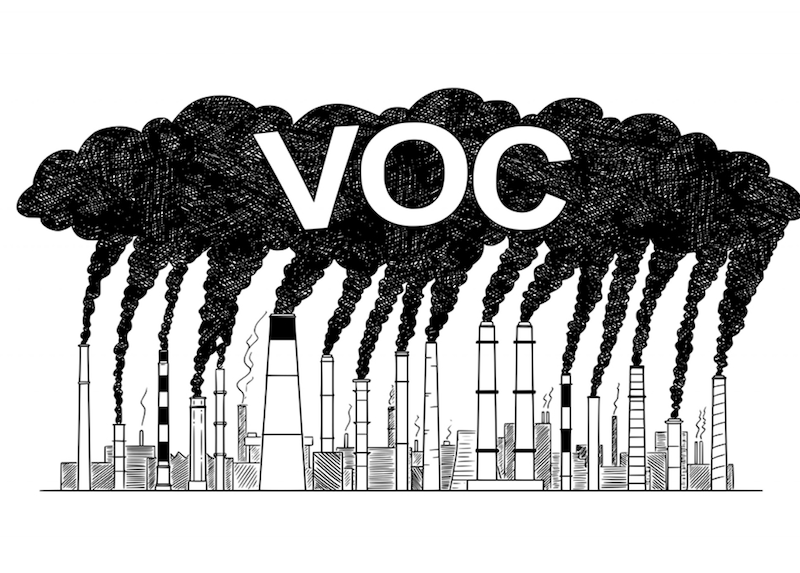
Strict VOC Regulations Across Countries
United States
- EPA (Environmental Protection Agency): The Clean Air Act mandates the control of outdoor VOC emissions. The EPA sets VOC emission standards for products like paints, aerosol coatings, and cleaners.
- CDPH Standard Method V1.2-2017: Regulates VOC concentrations in building materials, particularly for indoor environments.
- OSHA and NIOSH: Establish workplace VOC exposure limits (e.g., benzene <1 ppm TWA, toluene <500 ppm IDLH).
- Indoor airPLUS and LEED: Green building certifications require the use of low-VOC emission materials.
Europe
- Directive 2004/42/EC: Defines VOCs as compounds with a boiling point ≤ 250°C at 101.3 kPa and sets VOC content limits for paints, varnishes, and adhesives (e.g., interior paints <30 g/L).
- VOC Solvent Emissions Directive: Aims to reduce industrial VOC emissions, requiring sectors such as chemicals and pharmaceuticals to adopt emission-reduction technologies.
- A+ Label (France): Regulates very low total VOC emissions after 28 days of testing according to ISO 16000.
- Voluntary Certifications: EMICODE, Blue Angel, Nordic Swan Ecolabel, and EU-Ecolabel demand low VOC emissions from certified products.
- Country-Specific Regulations: Germany (AgBB), Denmark (Indoor Climate Label), and Finland (M1 Classification) set specific VOC emission limits for construction materials and furniture.
Vietnam
- QCVN 19:2024/BTNMT: National technical regulation on industrial emissions for dust and inorganic substances, effective from January 1, 2025, replacing QCVN 19:2009/BTNMT and QCVN 20:2009/BTNMT. Key VOC provisions include:
- Setting emission limits for industries like chemical production, paints, printing, and food processing, with specific values based on equipment type and sector.
- Specifying limits for hazardous VOCs such as benzene, toluene, dioxins, and furans.
- Requiring new facilities to comply immediately with strict limits (Column B, Tables 1 & 2); existing facilities are granted a grace period until December 31, 2024 (Column A).
- Businesses must report VOC inventories in Environmental Impact Assessment (EIA) or environmental permits.
- Decree 44/2016/NĐ-CP: Regulates monitoring of workplace air quality, including VOC control.
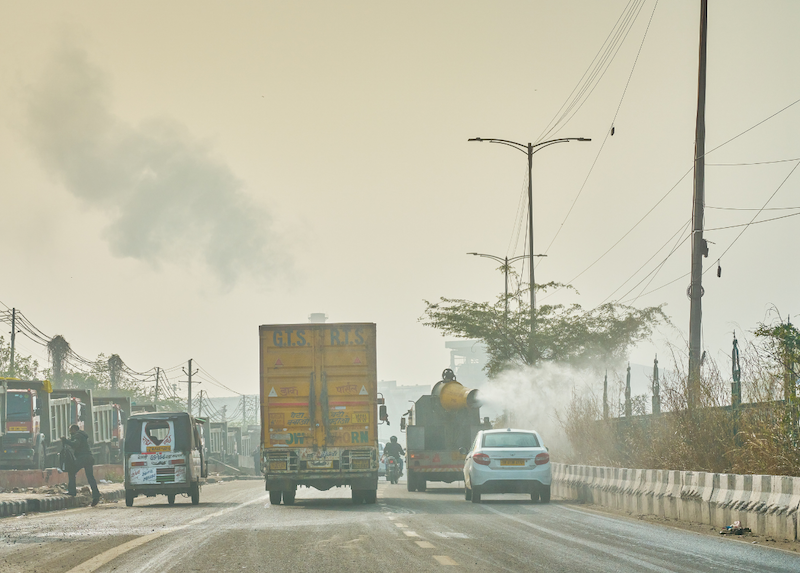
Health Impacts of VOCs
- Short-term effects:
- Irritation of eyes, nose, and throat
- Headaches, nausea, dizziness, fatigue
- Skin allergies, shortness of breath, nosebleeds
- Long-term effects:
- Damage to liver, kidneys, and central nervous system
- Behavioral disorders, memory loss, vision impairment
- Some VOCs (e.g., benzene, formaldehyde) are known carcinogens (lung and blood cancers)
- Particularly severe effects on children, asthma patients, and chemically sensitive individuals
- Cardiovascular impact: Certain VOCs may increase heart rate and damage arteries
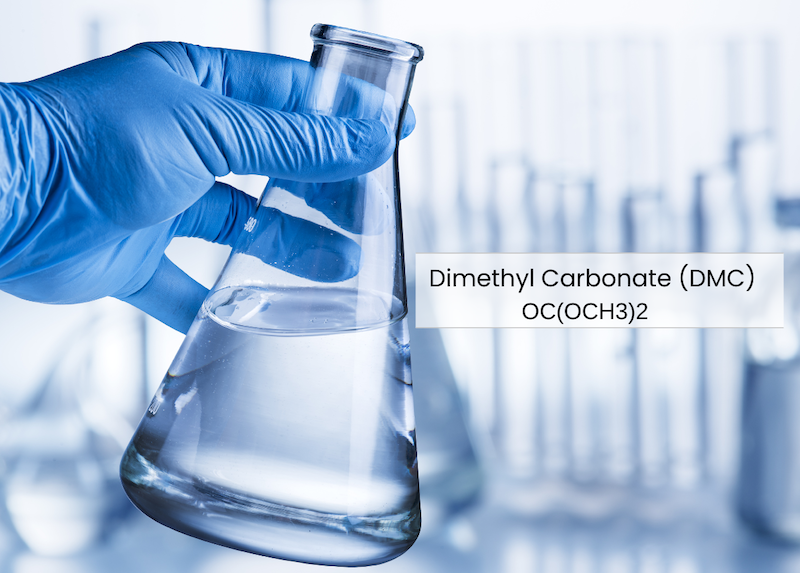
Environmental Impacts of VOCs
- Air pollution: VOCs react with nitrogen oxides in sunlight, forming ground-level ozone and photochemical smog, harming ecosystems and reducing crop yields.
- Greenhouse effect: Some VOCs contribute to global warming.
- Acid rain: VOCs may form compounds that cause acid rain, damaging soil and water sources.
- Soil and water pollution: VOCs from industries (e.g., solvents, paints) can leach into soil and water, causing long-term contamination.
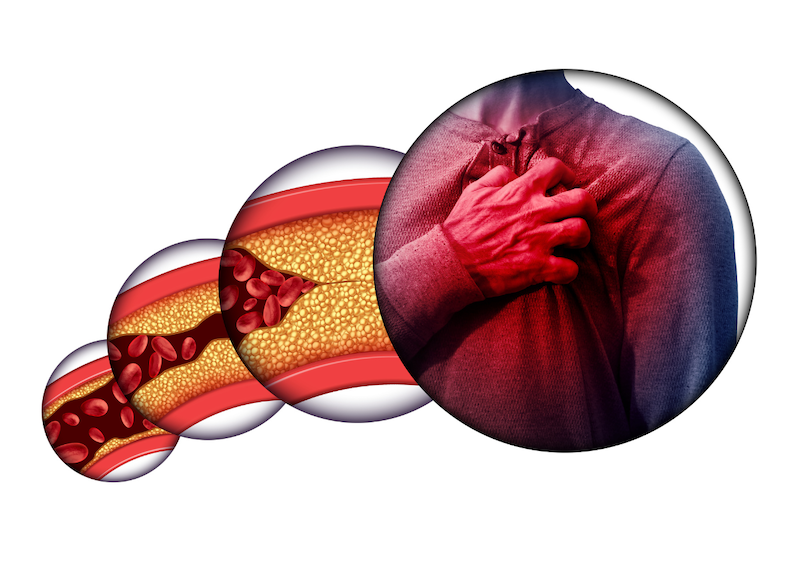
TOP 9 Common VOCs Used in Industry
The most frequently encountered VOCs (Volatile Organic Compounds) in industrial applications include:
-
Formaldehyde: Found in engineered wood, paints, adhesives, plastics, and construction materials.
-
Benzene: Used as a solvent in the production of chemicals, paints, and fuels.
-
Toluene: A solvent in paints, printing inks, and adhesives.
-
Xylene: Used in paints, thinners, and printing inks.
-
Acetone: A solvent in the manufacturing of paints, pharmaceuticals, and textiles.
-
Butoxyethanol: Present in paints, varnishes, and cleaning agents.
-
Styrene: Used in insulation materials, plastics, and plastic pipes.
-
Acetaldehyde: Found in food processing and chemical manufacturing.
-
Perchloroethylene: Used in dry cleaning and industrial degreasing.
TOP 5 Environmentally Friendly VOCs
Eco-friendly VOCs typically have low toxicity, are biodegradable, and cause minimal environmental pollution. Notable examples include:
Dimethyl Carbonate (DMC)
-
Origin: Produced from methanol and CO₂ or through oxidative carbonylation, avoiding the use of toxic phosgene.
-
Applications:
-
Solvent in ink formulations and packaging inks.
-
Electrolyte solvent for lithium-ion batteries (used in electric vehicles).
-
-
Benefits:
-
Low toxicity, biodegradable, fast evaporation rate (3.22 compared to butyl acetate = 1.0).
-
Exempt from VOC classification by the U.S. EPA (since 2009) due to low photochemical reactivity, reducing ground-level ozone formation.
-
Dimethyl Carbonate (DMC) is a green VOC used in printing ink solvents and packaging applications.
Terpenes (e.g., Limonene, Pinene)
-
Origin: Extracted from plants (e.g., orange peels, pine resin).
-
Applications: Solvent in cleaners, paints, and bio-inks. Limonene can replace hazardous aromatic solvents like toluene.
-
Benefits: Biodegradable, low toxicity, pleasant scent.
Ethyl Lactate
-
Origin: Derived from fermented corn or other plant sources.
-
Applications: Solvent in paints, cleaners, adhesives, and electronics industry.
-
Benefits: Non-toxic, biodegradable, a safer alternative to halogenated solvents such as perchloroethylene.
Methyl Soyate
-
Origin: Derived from soybean oil.
-
Applications: Solvent in paints, industrial degreasers, and plastic production.
-
Benefits: Low emissions of harmful VOCs, environmentally friendly, high performance.
Acetone (Under Controlled Use)
-
Applications: Solvent in paints, pharmaceuticals, and textiles.
-
Benefits: Lower toxicity compared to benzene or toluene; however, concentration must be controlled to minimize emissions.
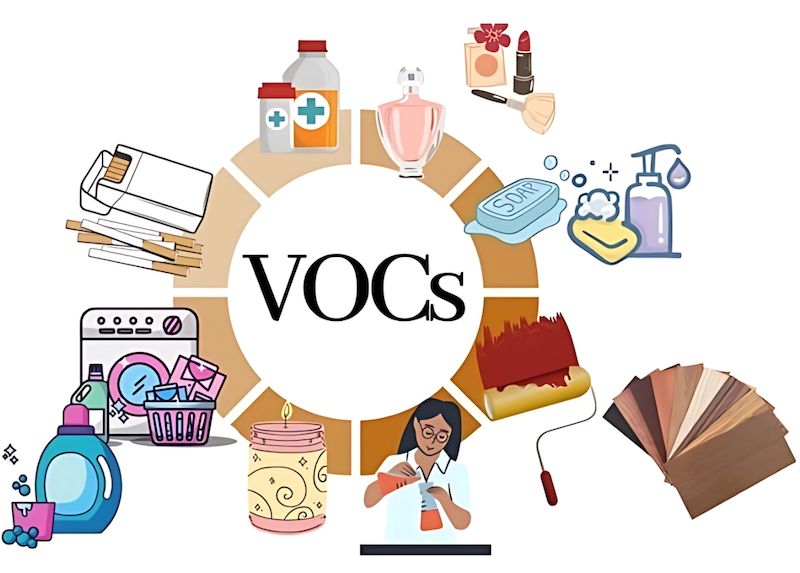
Frequently Asked Questions About VOCs
How can exposure to vocs be minimized?
To reduce VOC exposure and protect health, consider the following measures:
- Choose low-VOC products: Use water-based paints, eco-friendly cleaners, and cosmetics. Always check product labels for low VOC content.
- Enhance ventilation: Open windows, use exhaust fans during painting or cleaning, or install air conditioning to reduce VOC levels indoors.
- Store safely: Keep paints, solvents, and chemicals in sealed containers in cool, ventilated areas to prevent evaporation into living spaces.
- Use protective gear: When working with VOCs (e.g., painting, printing), wear masks, gloves, and safety goggles to reduce inhalation risks.
- Monitor air quality: Use air purifiers with filters or activated carbon to remove VOCs from indoor air.
Applying these steps helps lower the risk of eye and respiratory irritation, and long-term health issues related to VOC exposure.
Where do vocs mainly come from?
VOCs are emitted from both natural and human-made sources, but human activities dominate in urban environments.
- Natural Sources:
- Vegetation (e.g., isoprene, terpenes from forests).
- Microorganisms (e.g., dimethyl sulfide from oceans).
- Geological events (e.g., methane from volcanoes or wildfires).
- These contribute approximately 1150 Tg VOC annually, generally less harmful.
- Anthropogenic Sources:
- Industry: Paint, ink, adhesive, and solvent production release toluene and xylene.
- Transportation: Gasoline and diesel emissions, fuel vapor from refueling emit benzene and hydrocarbons.
- Agriculture: Pesticides and chemical fertilizers.
- Equipment: Printers, photocopiers, and air conditioners emit acetone.
- Consumer products: Oil-based paints, cleaners, and cosmetics.
These human-made sources are concentrated in cities, contributing to air pollution and photochemical smog, requiring stringent control.
What are VOCs in manufacturing?
VOCs in manufacturing are volatile organic compounds such as toluene, acetone, and formaldehyde used as solvents or raw materials in paints, inks, pharmaceuticals, and petrochemicals. Their evaporation pollutes the air and contributes to ground-level ozone. Effective control measures include air filtration technologies and regulatory compliance.
What are VOCs in business environments?
These are volatile organic compounds emitted from paints, cleaning agents, office printers, and furniture. VOCs can irritate health and pollute urban air. Appropriate measures include technology upgrades, using eco-friendly materials, and improving waste processing.
VOC (Volatile Organic Compounds) are essential in industry but contribute to air pollution, photochemical smog, and health risks including cancer. Controlling VOCs is vital for protecting both human health and the environment. Learn more and apply VOC reduction strategies today.
Contact K-Chem if your business needs paint removers, ready-mix solvents for inks or coatings that are safe for workers and the surrounding environment.
K-CHEM VIETNAM CO., LTD
- Address: N6B Road, Lot F, Phu Chanh 1 Industrial Cluster, Phu Chanh Ward, Tan Uyen City, Binh Duong Province, Vietnam
- Tel: +84 274 362 0218
- Email: info@k-chem.vn


